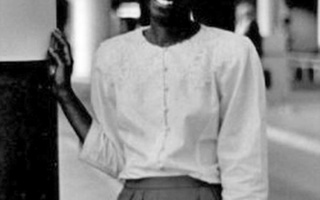In his 1959 lecture “The Two Cultures,” British physicist and novelist C.P. Snow famously lamented the gulf between scientists and literary intellectuals—thinkers who, although comparable in intelligence and social circumstance, shared such mutual incomprehension that in a trip from the scientific societies of South Kensington to the bohemian haunts of Chelsea, “one might have crossed an ocean.”
And if one actually traversed the Atlantic, Snow continued, “one found Greenwich Village talking precisely the same language as Chelsea, and both having about as much communication with MIT as though the scientists spoke nothing but Tibetan.”
But if Snow had visited MIT in 1959 and walked but two miles west, he would have found one newly appointed Harvard Professor of Zoology whose work on ants was about to catapult him toward both a prolific scientific and literary career: Edward O. Wilson.
After a half-century’s work at Harvard, Wilson is regarded as the father of sociobiology—the biological study of behavior. He has written over 25 books, two of which won Pulitzer Prizes. Now, at the age of 82, he presents his summa work, “The Social Conquest of Earth,” which will be released on April 9. It is a radical treatise on the human condition, and an attempt to overturn the very evolutionary ideas that have distinguished him as “Darwin’s natural heir.”
Wilson frames “The Social Conquest of Earth” as a dialogue with painter Paul Gauguin, who penned on the canvas of his 1897 Tahitian masterpiece: “Where do we come from? What are we? Where are we going?”
The painting, which graces the book’s cover, provocatively depicts Wilson’s dual identity as a man of science and letters.
“Innovators in both of two domains are basically dreamers and storytellers,” Wilson writes. “In the early stages of creation of both art and science, everything in the mind is a story…some [parts] which are discarded and new ones added.”
SCHOPENHAUER’S THREE STAGES
Wilson discards and adds evolutionary ideas aggressively in “The Social Conquest of Earth.” In a professional about-face, he argues that “eusociality”—which describes a group of organisms with members that forego reproduction to carry out specialized labor—does not evolve through kin selection, a theory which he helped champion at the height of his career.
First proposed by British biologist W.D. Hamilton in 1964, kin selection explains that under certain circumstances, an organism will forego reproduction—the ultimate Darwinian sacrifice—to promote the survival of those who are genetically related to it. Kin selection explains the existence of sterile female worker castes of ants, wasps, and bees—who peculiarly share more genetic similarity with each other than they would with their offspring. According to Hamilton, this altruism is a façade: it is in the sisters’ evolutionary interest to care for their queen, who would bear them more sisters, than to propagate their genes through their own reproduction.
If Hamiltonian kin selection was sociobiology’s gospel, Wilson was its evangelist—he advocated the theory in his field-defining 1975 work, “Sociobiology: The New Synthesis.” In the work, Wilson applied kin selection to the persistence of altruistic behavior from insects to the higher vertebrates.
It was in his final extension of kin selection to human beings—proposing that altruism and morality were in fact evolutionary adaptive, and employed in one’s self-interest—that Wilson came under fire.
“I thought my ideas would be welcomed, but boy, no person in the history of science was ever more wrong,” Wilson says.
“It was the white heat of the Cold War,” he continued, and he faced vicious animosity from leftist social intellectuals who recoiled at his proposal of a genetically determined human nature. The idea of “nature over nurture”—that one’s nature was shaped by genes—uncomfortably echoed the eugenic bigotry of the Nazis.
Nearly four decades later, Wilson remains unafraid to advocate unpopular ideas. Furthermore, he has shown, with the mark of a scientist, that he is willing to change his mind.
In recent years, he has felt that evidence for kin selection beyond the eusocial ants, bees, and wasps has grown equivocal, and has admitted that he was mistaken in supporting it.
“The beautiful theory never worked well anyway,” he writes, “and now it has collapsed.”
In its place, Wilson poses a new theory of eusocial evolution called “group-selection” as the driving factor toward eusociality and altruistic behavior.
Group selection acts not on the traits of an individual organism, but on those of a well-defined group that can reproduce itself as a unit and compete with other groups of the same species. Eusociality is selected for through the formation of groups that come by chance to establish a defensible, communal “nest” and acquire mutations that diminish the instinct for dispersal. From these conditions develop eusocial traits like caste determination, division of labor, and communication. Wilson argues that only after these traits are established do groups of organisms begin to display the genetic relatedness attributed to kin selection.
In 2010, Wilson partnered with mathematicians Martin A. Nowak, who is the director of Harvard’s Program for Evolutionary Dynamics, and Corina E. Tarnita ’06 to present the theory of group selection in a “Nature” article titled “The Evolution of Eusociality.”
The response was not one of political furor, as in 1975, but of scientific outrage. In a promptly written rebuttal that contained nearly 140 signatures, Wilson’s colleagues protested that the paper was published on grounds of reputation rather than sound science.
“It was an A to Z of the most important people in social evolution, and they all think it’s bogus,” says OEB Lecturer Andrew Berry. “Kin selection has allowed for beautiful insights and has proven predictive power—it would be insane to throw it away.”
Even Richard Dawkins, one of Wilson’s greatest supporters, could not accept his change of heart. But co-discoverer of the DNA double helix James D. Watson—an early departmental rival whom Wilson once described as “the most unpleasant human being” he had ever met—has pledged his support, and remains unfazed by the controversy.
“Both Ed and I are old enough to know that there are critics—and then there are critics,” he says. “We were grown up before the time of political correctness so we’re not at all bothered by offending anyone—including each other.”
“In time we realized we even liked each other,” he adds with a laugh.
Perhaps it is Wilson’s age that allows him to take on the controversy with similar lightheartedness.
He has taken to paraphrasing Arthur Schopenhauer, as he did on this occasion, to describe how he shepherds young scientific ideas—first kin selection, and now its challenger, group selection—through three phrases.
“First, the truth is ridiculed,” he says. “Then it meets outrage, and then it is says to have been obvious all along. We’re currently in the outrage stage, but I think before long it will be obvious.”
PART SAINT, PART SINNER
In “The Social Conquest of Earth,” Wilson distills group selection into a single “iron rule” of evolution: selfish individuals will beat altruistic individuals, but altruistic groups will beat selfish groups.
“If our behavior was driven entirely by group selection, then we’d be robotic cooperators, like ants,” he writes. “But, if individual selection was the only thing that mattered, then we’d be entirely selfish.”
The result of the constant tension between these two selective extremes, Wilson writes, is our human nature: the malleable expression of genes that shapes the way our senses perceive the world, the options for action that we pose to ourselves, and the decisions that we find most satisfying to make.
The tension between individual and group selection has also resulted in giving us a conflicted nature of motivations.
“It renders each of us part saint and part sinner,” he writes, tracing the origin of human morality, honor, and religion through the lens of group selection.
OEB Professor Richard C. Lewontin, one of the fiercest critics of the 1975 “Sociobiology,” holds that Wilson’s inquiries fall outside the domain of science.
“The impulse to make grand generalizations about our world is very powerful—we’ve all been taught that this is what it takes to make a great scientist, like a Newton or a Darwin,” Lewontin says.
“The danger of this impulse,” he continued, “is to tell a ‘Just So Story’ like Rudyard Kipling’s ‘How the Camel Got His Hump.’ I fear that Wilson has been lured down that path.”
It is true that Wilson is relentless in chasing stories—and the story of our evolution is among the grandest. But he is unapologetic. “There is a real creation story of humanity, and only one,” he writes, “and it is not a myth.”
THE TWO CULTURES
Echoing C.P. Snow’s 1959 lament near the end of his book, Wilson writes, “If there was a reason for bringing the humanities and science closer together, it is the need to understand the true nature of the human sensory world.”
He holds that the humanities, however fruitful, are filtered through what he describes as “the narrow biological channels of human cognition”: our eyes capture only a miniscule fraction of the electromagnetic spectrum, while our ears catch only a few frequencies of sound and our noses even fewer chemical scents.
The scientist works to heighten and extend our senses to fill in the details.
“In my fieldwork as a scientist, I can leave the intellectualization of academy behind me and become a hunter of a scientific bent, investing myself in something extremely literal—in touch, smell, taste, and sight,” Wilson says. “But when I write, it’s a different kind of discipline, and it becomes my objective to illuminate my experiences in nature in a captivating way.”
In this light, Wilson attempts to answer Gauguin in “The Social Conquest of Earth” by embracing the existential questioning of the humanities without sacrificing the “unrelenting application of reason” at the core of empirical science.
Balancing these motivations, as C.P. Snow writes, is the challenge: “the clashing point of two subjects, two disciplines, two cultures—of two galaxies—[ought] to produce creative chances.”
As a man of two cultures, E.O. Wilson—ever the dreamer, ever the storyteller—is one such creative chance.
—Staff writer Alyssa A. Botelho can be reached at abotelho@college.harvard.edu.
Read more in News
Talk Commemorates Entomology BookRecommended Articles
-
No Motion On the SidelinesIn reflecting on my Harvard undergraduate career, possibly the most enlightening yet enduring experience has been my four year association
-
BOOKENDSA T THE age of five Bertrand Russell's favorite hymn was "Weary of earth and laden with my sin." At
-
 Yes, There Are Things To Do in New Haven
Yes, There Are Things To Do in New Haven -
Burstein’s ‘Kin’ a Stark, Realistic Adoption Story"Kin" is grounded in several upsetting hypotheticals. What if a child and his adopted parent don’t fit? What if the child’s birth parents still question their decision decades later?
-
 Class of '88 Chooses Commencement 2013 Chief Marshal
Class of '88 Chooses Commencement 2013 Chief Marshal -
 Stephanie D. Wilson
Stephanie D. Wilson













